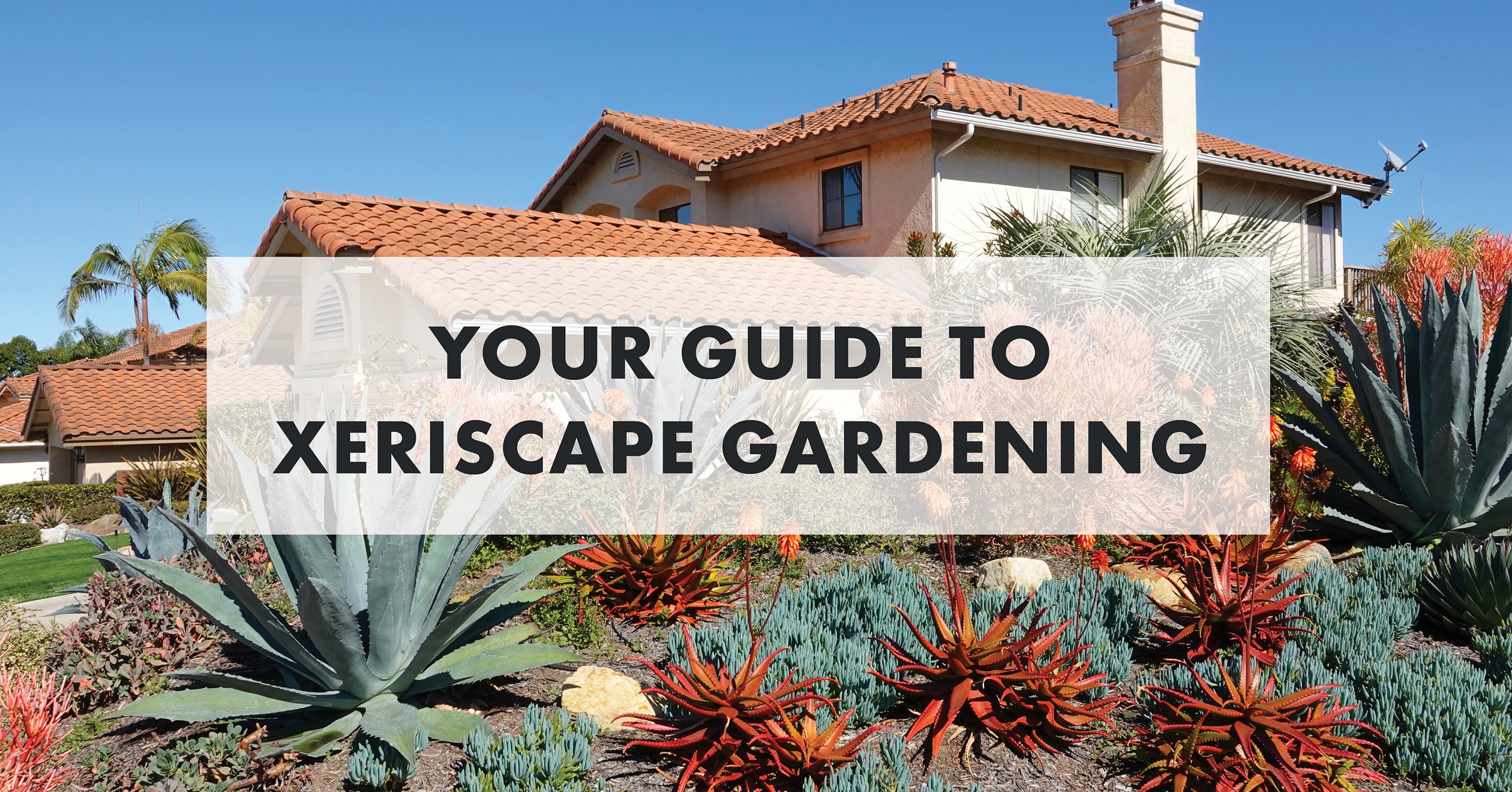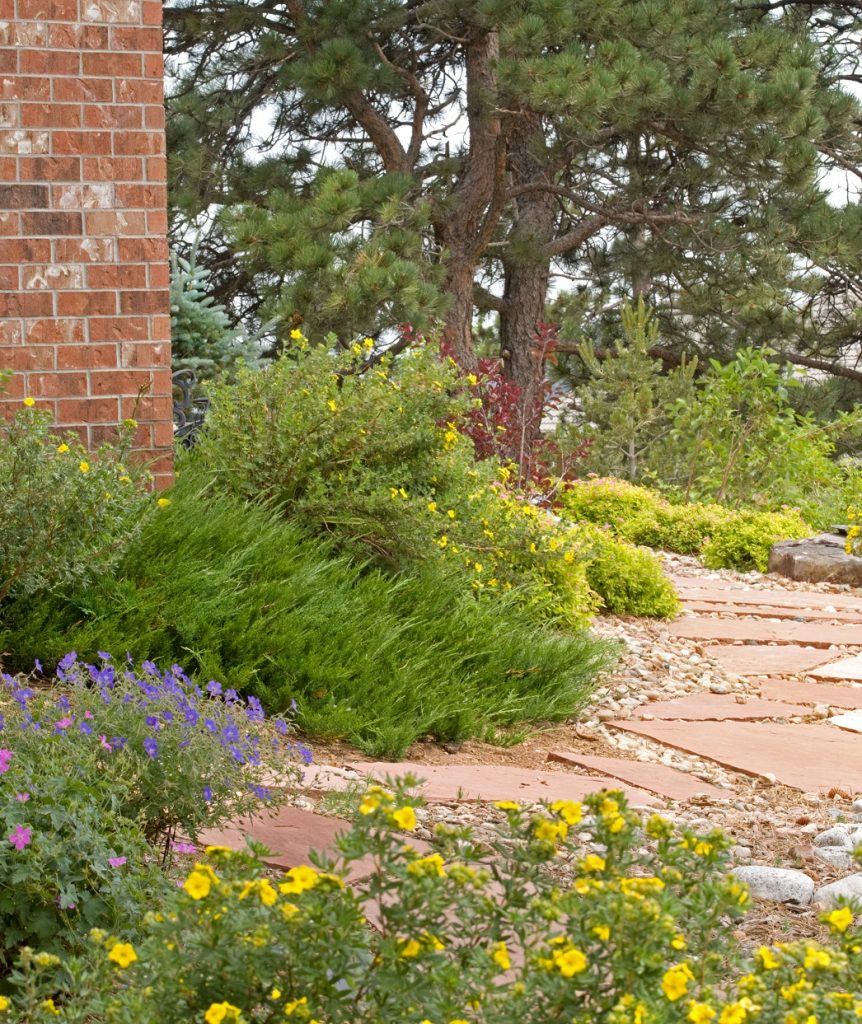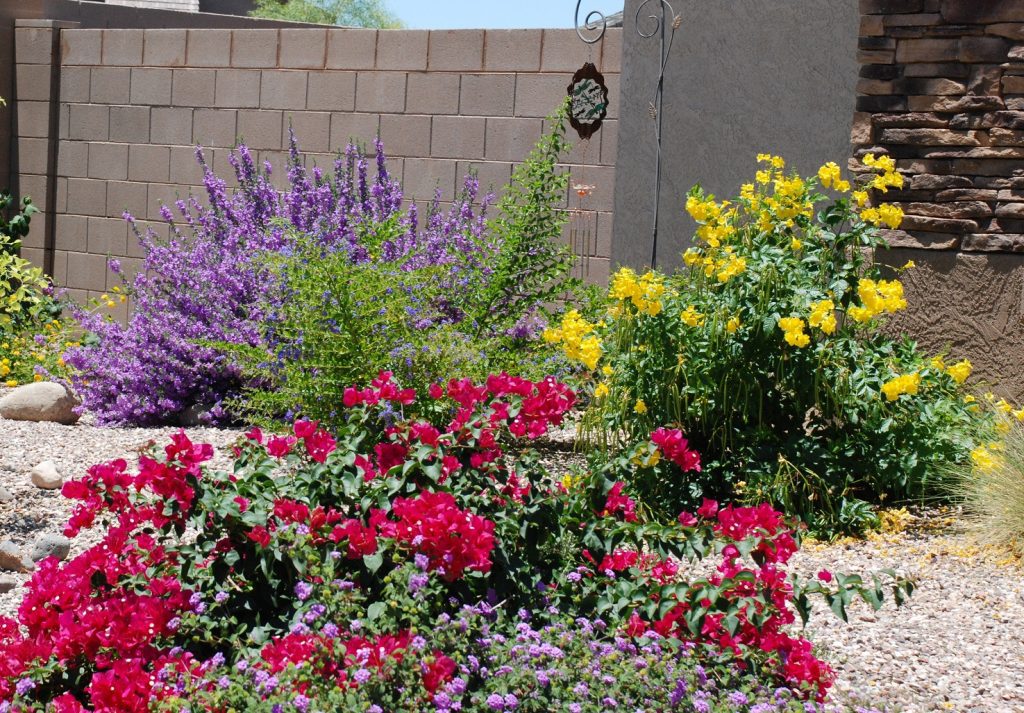
By Alena Kairys
Aug 12, 2021Think about how often you have to water, weed, and mow your lawn to keep it looking its best. Even if you’re able to get the results you want, it can be tedious to constantly maintain it. Xeriscaping can be a fantastic alternative to conventional lawncare, while saving you time and resources. If you’re ready to move to a more sustainable lawn, learn how you can transform your yard with xeriscape gardening.
What is Xeriscaping?
Xeriscaping (pronounced “zer-i-scaping”) is a type of gardening that emphasizes water conservation and easy upkeep by using drought-resistant plants and strategic planting. The concept behind xeriscaping is to have a garden with fewer watering needs that will survive during drier weather and be more eco-friendly. In addition to saving water, xeriscaping reduces need for pesticides due to mulch or gravel use. Even though xeriscape gardening is ideal for dry environments, it can work in any climate and can be as lush or minimalist as you want.
Plan Your Garden
Before you trade your current garden for a xeriscaped one, map out the current features of your yard. Be sure to note the natural sunlight patterns of your property and how sloped or flat a given section is. Knowing the characteristics of your yard will allow you to create irrigation zones to optimize your water usage. A good rule of thumb when planning your xeriscape garden is to place thirstier plants closer to your home and xeric (dry) plants further away from it. Feel free to xeriscape your whole yard if you’re ready to be rid of turf, or convert a portion of your garden if you want to keep some of your lawn. For the portions that will be replaced, remove any existing grass and sterilize the soil by carefully pouring boiling water on the area. It’s also recommended to perform a soil test before planting so you know the pH level and can make any adjustments to make it better for growing. Once you have made any amendments to your soil, mix in compost for added nutrients.

What to Plant
Even though xeriscaping is perfect for desert areas, it doesn’t mean you’re limited to growing cacti in your yard (unless you want to, of course!). There are many drought-resistant and drought-tolerant plants that can add color, texture, and variation to your garden. When possible, try including native species to support the local ecology and to make maintenance even easier.
Some grass that you can use in your garden are fountain grass, buffalo grass, Bermuda grass, pink muhlygrass, and blue gamma grass. For plants, consider sage, eastern juniper, and palo verde. Succulents like aloe, agave, and chicks and hens are also a safe bet to add to your yard. There’s no shortage of xeriscape-friendly flowers to choose from—you might be surprised to find your favorites are perfect for this type of gardening! Some great picks include sunflowers, lavender, black-eyed Susan, coneflower, red spider lily, purple poppy flower, cosmos, California tree poppy, and oleander.

When you’ve chosen what you want to grow, categorize them by sunlight and hydration needs. This will help you determine where each species should go based on the irrigation zones you identified earlier.
Set Up and Care
It’s finally time to start planting! Place your plantings around your property, following your irrigation zones as you go. When everything is in the ground, cover any exposed soil with a generous layer of mulch or gravel. Adding a top layer is an essential part of xeriscaping, as it insulates the plant from temperature changes and inhibits weeds from invading your garden. Natural mulch also provides the benefit of adding nutrients to the soil as it breaks down. One of the selling points of a xeriscaped garden is that it’s relatively low maintenance compared to a traditional lawn, but that doesn’t mean it’s maintenance free. As your garden thrives, remove any weeds you see and prune plants as needed to promote growth. Though many of your plants can survive without frequent sprinkling, you will need to water them more often when they are newly planted. You can water them once a week or once every two weeks once they mature, but always refer to the needs of your irrigation zones. When you do water your garden, try to direct the stream close to the base of the plant to maximize water usage.
Although creating a xeriscaped garden takes some careful preparation, it can be well worth it when you find how much time and water you’re saving maintaining your yard. When less of your week is spent tending to your garden, the more you’ll be able to enjoy its beauty.
If you have any questions about the home buying process, contact one of our licensed Mortgage Loan Originators. If you are ready to begin the home buying process, click here to get started!
These blogs are for informational purposes only. Make sure you understand the features associated with the loan program you choose, and that it meets your unique financial needs. Subject to Debt-to-Income and Underwriting requirements. This is not a credit decision or a commitment to lend. Eligibility is subject to completion of an application and verification of home ownership, occupancy, title, income, employment, credit, home value, collateral, and underwriting requirements. Not all programs are available in all areas. Offers may vary and are subject to change at any time without notice. Should you have any questions about the information provided, please contact us.